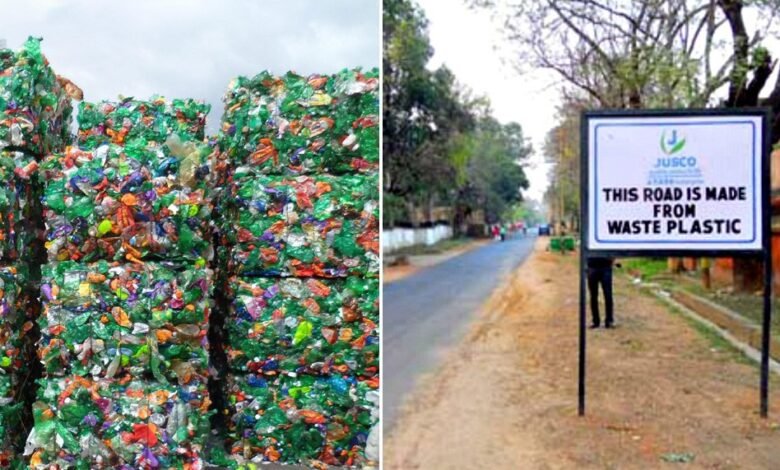The Good, the Bad, and the Ugly of India’s Waste Crisis
The story of waste-to-energy in India isn’t one of unmitigated success, nor is it one of inevitable doom. It is a tale of the good, the bad, and the ugly.

The Indian waste-to-energy market is at a tipping point, valued at USD 1,089.34 million this year, with a cautious optimism that could see it grow at a modest 2.56% CAGR. It’s easy to marvel at the numbers and projected growth rates, but let’s peel back the layers and address the core issues—and opportunities—that lie beneath the surface of this industry. India, with its rapidly expanding urban centers and mounting waste problem, stands at the crossroads of an environmental crisis and an untapped energy opportunity.
The Good: The market has rebounded from the disruptions of the COVID-19 pandemic, returning to pre-pandemic levels. That’s a promising sign of resilience, but more importantly, there has been a growing realization that waste isn’t just a problem—it’s a potential resource. India’s waste processing capacity has jumped from a dismal 17.97% in FY2016 to an impressive 73% in FY2022. This is no small feat, considering the country’s waste management system has long been plagued by inefficiencies, unregulated landfills, and a severe lack of infrastructure.
The Bad: India’s waste generation is spiraling out of control, fueled by rapid urbanization. Our megacities are bursting at the seams, struggling to cope with the mountains of waste piling up daily. Over 50% of this waste is organic, yet instead of turning it into compost or energy, much of it ends up in poorly managed landfills that spew toxins into our air, soil, and water. The situation is further complicated by an unregulated recycling sector that contributes to pollution rather than alleviating it. The absence of stringent regulations has allowed informal recycling mechanisms to flourish, resulting in water contamination from paper mills, hazardous e-waste disposal, and indiscriminate dumping by rogue recyclers.
The Ugly: Then there’s the environmental dilemma posed by incineration, which remains the most common waste-to-energy technology. While it’s true that thermal technologies like incineration, pyrolysis, and gasification are relatively inexpensive and easier to implement, they come at a cost—environmentally and, perhaps, morally. Burning waste releases pollutants, raising legitimate concerns about the long-term viability and sustainability of this approach.
Why Waste-to-Energy is a Double-Edged Sword
Yes, WtE plants can significantly reduce the volume of waste, freeing up precious space in our overcrowded landfills. And yes, they can generate energy to help meet the country’s growing power demands. But let’s not fool ourselves into thinking this is a silver bullet. The emissions from incineration are an ongoing issue that regulators and industry players cannot afford to overlook. Environmentalists have already raised red flags about the health hazards and ecological risks. Should we be adopting a technology that merely transforms one type of pollution into another?
Yet, abandoning waste-to-energy isn’t an option either. The technology has a vital role to play, but only if the industry embraces more sustainable and advanced techniques. Methods such as anaerobic digestion and fermentation offer a way to generate energy without the heavy environmental toll of incineration. By focusing on such technologies, India can forge a more balanced path that doesn’t compromise the health of its people or its environment.
A Race Against Time: The Need for Urgent and Decisive Action
According to the Ministry of Housing and Urban Affairs, as of March 2022, India had 249 operational WtE plants with a combined input capacity of 0.074 lakh tonnes per day. It sounds like progress, but when you consider the sheer scale of the waste crisis, it’s still a drop in the ocean. To put it into perspective, a city like Delhi generates around 11,000 metric tonnes of waste every single day. Even with upcoming projects like the Tehkhand plant, designed to process 2,000 tonnes of waste daily, we are only scratching the surface.
If there’s one thing that the market’s growth rate signals, it is that we are in a race against time. Urban centers are expanding, the population is growing, and the amount of waste produced is not just a linear progression—it’s an exponential surge. To truly tackle the waste management crisis, India must adopt a multi-pronged approach that includes regulatory reform, technological innovation, and active public participation.
The Path Forward: Bridging the Gaps in Policy, Technology, and Execution
The waste-to-energy market cannot thrive in isolation. It requires a policy framework that incentivizes cleaner technologies while penalizing environmentally harmful practices. Government initiatives such as Swachh Bharat Abhiyan and National Clean Energy policies are steps in the right direction, but they must be coupled with strict enforcement of waste segregation at the source, landfill regulations, and emission standards for WtE plants.
Moreover, WtE should not be seen as a substitute for reducing, reusing, and recycling. It should complement these activities as part of an integrated waste management strategy. The government and industry need to invest in research and development to bring down the costs of advanced waste-to-energy technologies and improve their efficiency. Collaboration with global leaders in WtE technology could accelerate this process and help leapfrog some of the challenges.
Turning Waste Into Wealth, but Not at Any Cost
The Indian waste-to-energy market stands at a crossroads. There is immense potential, but the path ahead is fraught with challenges. We must look beyond the surface-level numbers and ask the hard questions. Are we merely shifting the burden of waste from the ground to the air? Can we embrace cleaner, more sustainable technologies quickly enough to make a real impact?
The truth is, we cannot afford to wait. Every day of inaction adds another layer to our mountains of waste. It’s time to turn our waste into wealth, but not at the cost of our health and environment. The real question is: do we have the vision and the will to make it happen? The clock is ticking, and India cannot afford to waste any more time.





